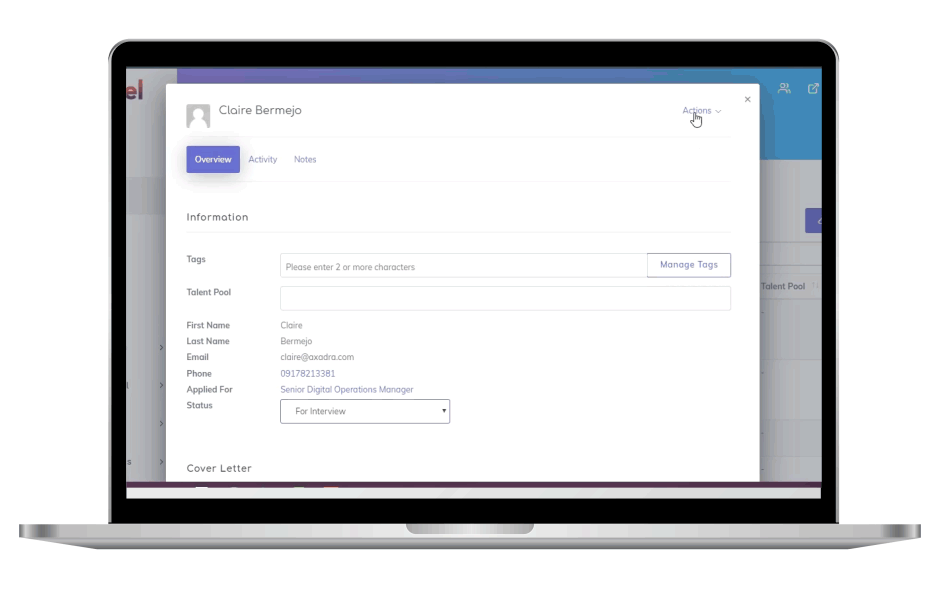Selecting an applicant tracking system is a critical decision that can significantly impact your recruitment process. With so many options available, it’s easy to feel overwhelmed.
But don’t worry—by following a clear, structured approach, you can confidently choose an applicant tracking system that meets your organization’s unique needs. This guide will walk you through the essential steps, from mapping out your requirements to assessing the system’s features, ensuring you make an informed choice.
Map Out Your Requirements
Before diving into the sea of applicant tracking system options, you need to have a clear understanding of what you’re looking for. This involves mapping out your requirements, which will serve as a blueprint during your selection process. Here’s how to get started:
Recruitment Needs
Your first step is to identify your recruitment needs. What are the primary challenges you face in your hiring process? Are you struggling with a high volume of applicants, or do you need a system to help you find niche candidates?
Maybe you’re looking for a way to better organize your talent pool or streamline communication with candidates. By pinpointing these needs, you can focus on applicant tracking system features necessary to address them.
Consider the following questions:
- How many job openings do you typically have at any given time?
- What stages of the recruitment process are most time-consuming?
- Do you require features like automated interview scheduling, candidate scoring, or social media integration?
- How important is collaboration within your hiring team, and do you need an ATS that facilitates this?
By answering these questions, you’ll gain a clearer picture of what you need from an applicant tracking system, which will narrow down your options and make your decision-making process more manageable.
Recruitment Budget
Budget is a crucial factor in any business decision, and selecting an applicant tracking system is no different. Determine how much you’re willing to spend on a system and what kind of return on investment (ROI) you expect.
It’s important to strike a balance between cost and functionality. While it might be tempting to go for the cheapest option, remember that an applicant tracking system is an investment in your company’s future. Choosing a system that lacks essential features or scalability could end up costing you more in the long run.
Integration
Your applicant tracking system should seamlessly integrate with your existing tools and platforms. Consider what recruitment management software you’re already using and ensure that the applicant tracking system you choose can easily integrate with them. A system that works well with your current tools will save you from having to switch between multiple platforms, ensuring a smoother and more efficient recruitment process.
Reporting and Analytics
Data-driven decision-making is crucial in recruitment. An applicant tracking system with robust reporting and analytics features can provide valuable insights into your hiring process, helping you identify areas for improvement and make more informed decisions.
Consider the following when evaluating reporting capabilities:
- Does the ATS offer customizable reports that align with your key performance indicators (KPIs)?
- Can you track metrics such as time-to-hire, cost-per-hire, and source of hire?
- Does it provide insights into diversity and inclusion metrics?
- How easy is it to access and interpret the data?
Implementation Timeline
The implementation timeline is another critical consideration. How quickly do you need the applicant tracking system up and running? Implementation times can vary significantly between systems, depending on their complexity and the level of customization required.
Here’s what to think about:
- What is the expected implementation timeline, and does it align with your recruitment schedule?
- How much training will your team need to get up to speed with the new system?
- Is there dedicated support available during the implementation phase?
Choosing an applicant tracking system with a manageable implementation timeline and adequate support will ensure a smooth transition, minimizing disruption to your recruitment activities.
Try a Demo
Once you’ve mapped out your requirements, it’s time to get hands-on with the systems you’re considering. Most applicant tracking system vendors offer demos or trial periods, allowing you to test the system before making a commitment. During this phase, you should assess the following key areas:
Mobile-Friendliness
In today’s mobile-centric world, your applicant tracking system must be accessible on the go. Mobile-friendliness is particularly important if your recruitment process involves hiring managers or team members who need to review applications or communicate with candidates from their smartphones.
Customization Options
Every organization has unique needs, and a one-size-fits-all approach rarely works. That’s why it’s important to assess the customization options available with each applicant tracking system.
When assessing an applicant tracking system, it’s essential to consider the following:
- Can you customize workflows to match your recruitment process?
- Is it possible to tailor the candidate experience, such as customizing application forms or communication templates?
- How flexible are the reporting tools—can you create custom reports that suit your specific needs?
An applicant tracking system that offers robust customization options will allow you to tailor the system to your specific requirements, ensuring it works seamlessly with your existing processes.
Flexibility and Scalability
As your company grows, your recruitment needs will evolve. It’s important to choose an applicant tracking system that can scale with you, providing the flexibility to add new features or accommodate an increasing number of users or job openings. An applicant tracking system that offers flexibility and scalability will ensure that you won’t outgrow the system, saving you from the hassle of switching platforms as your business expands.
User-Friendliness
No matter how many features an applicant tracking system offers, if it’s not user-friendly, it will be a struggle to get your team to use it effectively. A system that is intuitive and easy to navigate will save time and reduce the learning curve. A user-friendly applicant tracking system will encourage adoption across your team, ensuring that everyone is on board and using the system to its full potential.
Customer Support
Even the best systems can run into issues, which is why strong customer support is essential. During the demo phase, take the time to assess the vendor’s customer support offerings.
Good customer support can make all the difference when you encounter a problem. This can help you ensure that any issues are resolved quickly and minimize disruption to your recruitment process.
Assess the Vendor’s Reputation
Now that you’ve tried out the applicant tracking system and assessed its features, it’s time to look at the vendor’s reputation. The quality of the vendor behind the applicant tracking system is just as important as the software itself. Here’s how to evaluate their reputation:
Check Track Record
A vendor’s track record can provide valuable insight into their reliability and the quality of their product. Look for vendors with a proven history of success in the applicant tracking system market.
Ask yourself the following questions:
- How long has the vendor been in business?
- What is their track record with similar companies in your industry?
- Have they consistently updated and improved their product over time?
A vendor with a solid track record is more likely to provide a reliable, high-quality applicant tracking system that will meet your needs for years to come.
Read Client Reviews
Client reviews can offer a real-world perspective on the system’s strengths and weaknesses. Take the time to read reviews from other companies that have used the applicant tracking system you’re considering.
Look for the following:
- Consistent praise or complaints across multiple reviews
- Feedback on specific features or customer support experiences
- Reviews from companies similar to yours in size or industry
While no system will have universally positive reviews, a pattern of positive feedback can give you confidence in the vendor’s ability to deliver a quality product.
Assess Data Privacy and Security
In today’s highly digital age, data privacy and security are more important than ever. An applicant tracking system will store a significant amount of sensitive information, so it’s crucial to ensure that the system you choose adheres to the highest security standards.
Consider the following when evaluating data privacy and security:
- Does the applicant tracking system comply with relevant data protection regulations?
- What security measures are in place to protect candidate data (e.g., encryption, secure servers, regular security audits)?
- How does the applicant tracking system handle data breaches or security incidents?
- Are there clear protocols for data retention and deletion?
Ensuring that the applicant tracking system you choose has robust security measures in place will protect not only your organization but also the candidates who trust you with their personal information. Data privacy is a critical aspect of your reputation, and choosing a secure system is a vital part of maintaining that trust.
Find a System That Works for You
Selecting the right applicant tracking system is a significant decision that will have a lasting impact on your recruitment process. By following these steps, you’ll be well on your way to choosing an applicant tracking system that not only meets your current needs but also supports your organization’s growth and evolving hiring strategies.
Remember, the right applicant tracking system is more than just a tool; it’s a strategic asset that can enhance your recruitment efforts, streamline your processes, and help you build a stronger, more efficient hiring team.
Take the time to carefully evaluate your options, and don’t be afraid to ask questions or seek additional demos if needed. With the right approach, you’ll find an applicant tracking system that’s perfectly suited to your organization’s unique needs—one that will empower you to attract, hire, and retain the best talent in the market.













